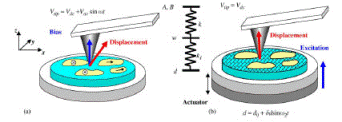Department of Physics and Astronomy: Publications and Other Research
Date of this Version
2017
Citation
Yuan et al., Sci. Adv. 2017;3: e1602164 17 March 2017
Abstract
Organic-inorganic hybrid perovskites (OIHPs) have been demonstrated to be highly successful photovoltaic materials yielding very-high-efficiency solar cells. We report the room temperature observation of an anomalous photovoltaic (APV) effect in lateral structure OIHP devices manifested by the device’s open-circuit voltage (VOC) that is much larger than the bandgap of OIHPs. The persistent VOC is proportional to the electrode spacing, resembling that of ferroelectric photovoltaic devices. However, the APV effect in OIHP devices is not caused by ferroelectricity. The APV effect can be explained by the formation of tunneling junctions randomly dispersed in the polycrystalline films, which allows the accumulation of photovoltage at a macroscopic level. The formation of internal tunneling junctions as a result of ion migration is visualized with Kelvin probe force microscopy scanning. This observation points out a new avenue for the formation of large and continuously tunable VOC without being limited by the materials’ bandgap.
Included in
Atomic, Molecular and Optical Physics Commons, Condensed Matter Physics Commons, Engineering Physics Commons, Other Physics Commons


Comments
2017 © The Authors, some rights reserved; exclusive licensee American Association for the Advancement of Science. Distributed under a Creative Commons Attribution NonCommercial License 4.0 (CC BY-NC).